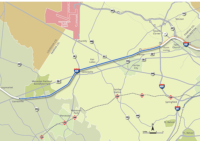
California lawmakers are pressuring railroads to share maintenance and construction data for infrastructure exposed to increased crude-oil traffic from North Dakota. There are 5,000 railroad bridges in California, but almost no public data exists on them, says U.S. Rep. John Garamendi (D-Calif.). "Are they safe?" he asks. "I don't know, but there should be some standard for determining their safety."
Garamendi tells ENR that infrastructure upgrades and maintenance, especially to bridges, are crucial as more crude from North Dakota moves to California refineries and ports. Railroads were ordered to release information by U.S. transportation officials last May, he says. It hasn't happened. "Currently, there is no catalogue of at-risk bridges, so we really don't know what some of the dangers are," Garamendi says.
The rail industry says releasing crude rail-route information actually elevates security risks by making it easier for someone intent on causing harm, says Ed Greenberg of the American Association of Railroads. "America's railroads support providing information to relevant members of the emergency-response community," he says. "For years, the nation's railroads have been informing officials of what is being transported through communities as part of the rail industry's commitment to preparedness and training."
Bridges are inspected by qualified staff, and every structure is part of a detailed inspection and maintenance plan, Greenberg says. "Class 1 freight railroads follow a bridge-inspection process that is in line with federal regulations."
Lena Kent, spokeswoman for the Burlington-Northern Sante Fe Railroad, says media representations of the amount of crude-oil traffic moving through California are overblown. On the other hand, a CBS news affiliate in December reported it had obtained a letter to the Contra Costa County Office of Emergency Services from BNSF, which stated that crude-by-rail traffic in the state was expected to increase by 25%. "Recent numbers show we had zero to two oil trains moving through California a month, and that was before the drop in oil prices," Kent tells ENR.
Nevertheless, a number of government programs support increasing the safety of rail infrastructure, Garamendi says. The new federal budget could make available $10 million in grants to improve safety at railroad-grade crossings that handle crude oil and other hazardous flammable liquids and provide funding to the U.S. Dept. of Transportation for more track inspectors. "There's also a federal tax incentive for rail companies to make safety upgrades," Garamendi says.
Further, a new intelligence law requires security assessments of American oil refineries and railroad infrastructure by the Dept. of Homeland Security's Office of Intelligence and Analysis. After the assessment is conducted, the DHS office must submit the results of its assessment to Congress, along with any recommendations for improving the security of domestic oil refineries and ensuring rail tracks are maintained on crude-oil transportation routes.
The railroads received extensive authorities and rights-of-way as incentives to take on the risk of building the railroads, says Jeffrey Lessman, vice president, Shimmick Construction. The rail industry has often been able to self-inspect its infrastructure, he says.
Garamendi agrees, saying, "The rail companies should be held to a standard."
Aging infrastructure presents an opportunity for contractors, Lessman says. "Right now, the funding just is not there," he says. "But it will be interesting to see if California imposes more oversight on the railroads."
For now, freight competition, more than safety concerns, is driving rail construction work in California, says Sergio Varela, J.A. Placek Construction. "Let's face it, [the rail industry] has to compete with ships going through the Panama Canal," he says. "It thinks it can get product across the country faster, but it is going to have to upgrade its infrastructure."


Post a comment to this article
Report Abusive Comment